You have no items in your shopping cart.
Ganlanba
Introducing Ganlanba (from China.org.cn)
Ganlanba is a beautiful place typical of the customs of the Dai ethnic group and tropical scenery. Ganlanba (Olive Dam), a complex of several villages inhabited by the Dai people, is shaped like an olive and abounds in evergreen plants; hence its name. Viewed from the air, the villages are connected to one another and covered with green trees, while Buddhist pagodas and bamboo tower houses stand out amidst the lush green. The two main Dai villages in Ganlanba are Mansongman (garden village) and Manting (fruit garden). Ganlanba is also known as Menghan ("han" means rolling up), and according to a legend, from which the name derives, when Sakyamuni came here to preach Buddhism, his followers laid a cotton cloth on the ground for him to tread on. After he had walked over it, his followers rolled up the cloth.
Ganlanba Fast Facts
• Chinese Name: Gan Lan Ba 橄榄坝
• Best Time to Visit: October to June
• Recommended Visiting Hours: 4-5 hours
• Things to Do: Photography, Dai Ethnic Culture, Architecture
• Opening Hours: 08:00-18:30
• Entrance Fee: CNY 60
• Address: Mengla Township, Jinghong, Xishuangbana Dai Autonomous Prefecture, Yunnan Province
What to expect at Ganlanba
Tropical Scenery & Dai Ethnic Customs
Ganlanba attracts tourists with its tropical scenery and its Dai ethnic customs. The hot and rainy climate brings Ganlanba abundant products, including a variety of tropical fruits. Delicate bamboo towers dot orchards and bamboo groves, and the Dai women, proportionally shaped and colorfully dressed, make their way elegantly along the paths. When carrying baskets of fruits, the women move their bodies slightly in accordance with the rhythm of the shoulder poles. Myanmar-styled Buddhist temples and pagodas can be found here and there, and it is common to see monks in yellow cassocks traveling around the villages.
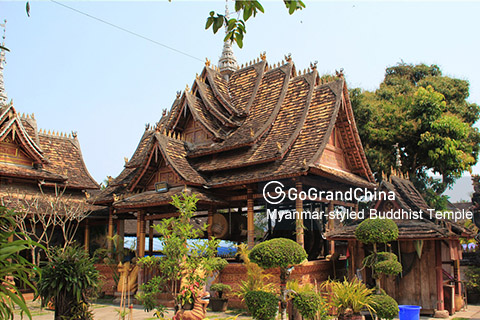
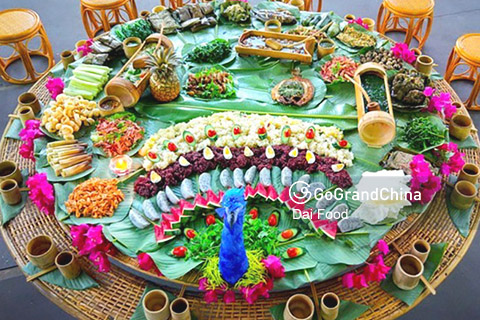
Dai House & Villages
The bamboo houses of the Dai people are a must for visitors to Ganlanba. These houses usually have two stories: The lower story is simply composed of wooden columns, which are used to support the upper story. They look like "Hanging Towers," and are surrounded by spacious courtyards. Local people believe this particular type of structure can help promote air circulation and heat elimination. The upper story is about two meters above the ground, and is made accessible by a wooden ladder. The walls and floor of the living room are covered with bamboo mats, which make the room cool and comfortable. Because the windows are small, though, the light inside is dim. In the center of the room, there is a small, low bamboo table surrounded by a few bamboo seats. Glutinous-rice tea, for entertaining guests, as well as jade wares and gold and silver ornaments are for sale and are placed on the table. If you stay for a meal, the family's women will be happy to cook dishes of genuine local flavors for you. Most Dai dishes are light, and famous foods include pineapple-flavored rice, crispy deep-fried cowhide, and grass toasted fish. When big fairs are held, the local families offer several tables of wine and food in their living rooms to entertain their relatives and friends from neighboring villages.
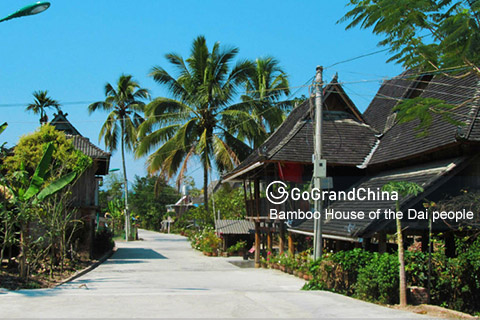
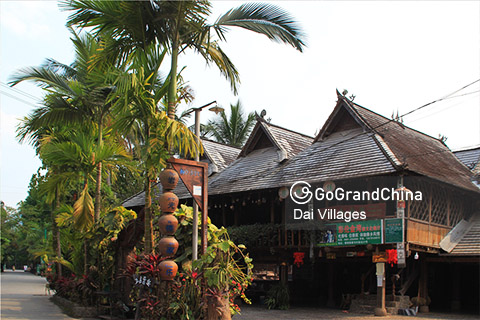
It is a fantastic experience to take a leisurely stroll around the Dai villages. Walking along the paths in the woods, you can enjoy the fragrance of the flowers and view the naive, little children running around. In the temples, you can circle around the towering white pagodas and appreciate their delicate decorations. With the blue sky and white clouds as a backdrop, the golden roofs of the halls become more splendid. Outside the temples, you can also visit squares and souvenir shops and buy tropical fruits. While viewing the skyline of Ganlanba in the glow of the setting sun as you savor a cup of glutinous-rice tea, you feel carefree and joyous.
Water Splashing Ritual
During the grand Water Splashing Festival ( it falls in mid-April and lasts at least three days), New Year celebration day of Dai calendar, Dai people will come to Dai Park to celebrate, worship and go sightseeing. Moreover, there are performances and water splashing activity in the square on every afternoon. Tourists can join them and enjoy themselves in the activity.
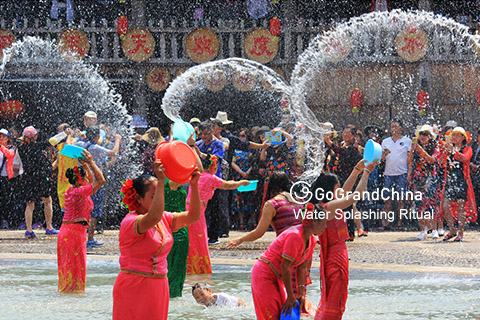
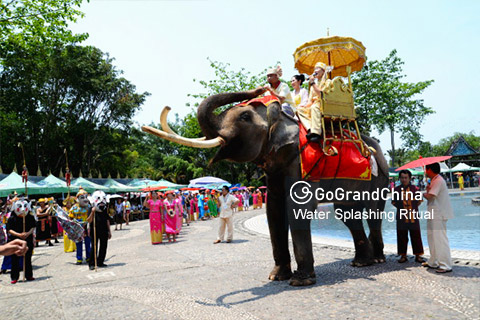
How to get to Ganlanba
• Take a direct bus at Jinghong Bus Station to Ganlanba.
• Rent a car/bus from GGC to enjoy a hassle free private transfer from hotels in Xishuangbanna to Ganlanba.
Additional travel advice on Ganlanba
• Please follow the local customs and show respect.
• When visiting a Dai house, leave your shoes on the first floor to keep the host's living room clean.
There are no products matching the selection.

